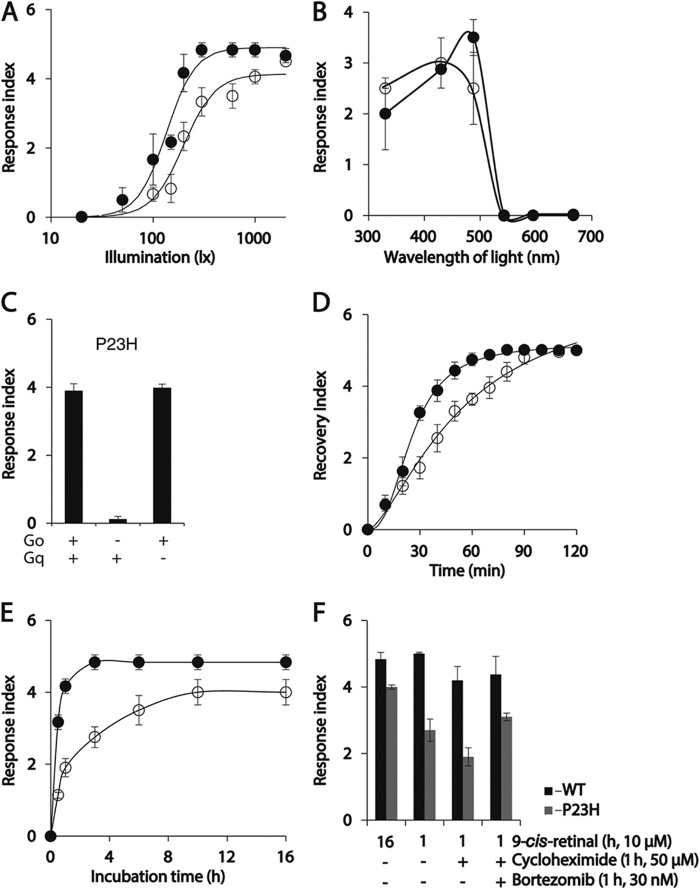FIGURE 7.
Characterization of P23H TG C. elegans responses to light. After incubation with 9-cis-retinal overnight, P23H and WT TG C. elegans became paralyzed upon illumination with bright light. (The degree of light-induced paralysis was scored by the light response index described under “Experimental Procedures.”) A, light sensitivity of P23H and WT worms is indicated by plotting their light response index scores as a function of light intensity. Response scores for WT and P23H opsin worms were plotted as solid and open circles, in A, B, D, and E. B, spectra of light sensitivity exhibited by P23H and WT worms are compared by plotting their light response index scores as a function of illumination wavelength at 300 lux for 1 s. C, light response of P23H worms (left bar) was abolished if they were crossed with Goα mutant worms (middle bar), whereas crossing them with Gqα mutant worms did not affect the light response (right bar). D, recovery index values (described under “Experimental Procedures”) for both P23H and WT worms are plotted as a function of time. P23H worms needed more time to recover from light-induced paralysis than WT worms. At time = 0, worms were illuminated with either 500 lux light (WT opsin-expressing worms) or 2000 lux light (P23H opsin-expressing worms), the lowest light intensities that caused full paralysis for each line. E, biosynthesis of P23H opsin and WT opsin was estimated in C. elegans by plotting their light response index values as a function of 9-cis-retinal incubation time. F, bar graphs show the effect of cycloheximide (a protein synthesis/translation inhibitor), bortezomib (a protein degradation inhibitor), or both on light responses of WT (black) and P23H (gray) worms after a 1-h incubation with 9-cis-retinal in the dark. Worms incubated for 16 h with 9-cis-retinal served as positive controls. Worms in C, E, and F were illuminated with 1000 lux light with a maximum emission at 488 nm for 1 s.

